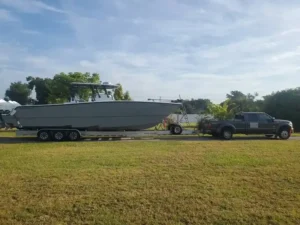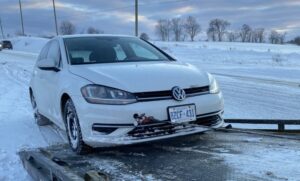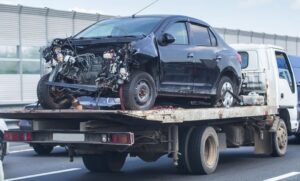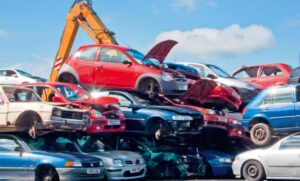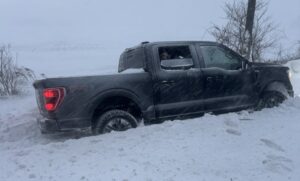The internet is a vast repository of intriguing, and sometimes astonishing, content. Among the many viral snippets that capture global attention are videos showcasing seemingly miraculous car repairs in parts of Africa, often touting incredibly low costs – sometimes as little as $50 for what appears to be significant damage. For a vehicle owner in Ontario, especially in areas like Aurora, where professional repair after accident can easily run into thousands of dollars, such a figure can evoke wonder, disbelief, and perhaps even a fleeting thought of “why can’t it be like that here?”
However, the reality behind a “$50 car repair after accident in Africa” is complex, deeply rooted in economic disparities, vastly different safety standards, and a stark contrast in automotive philosophy compared to North America. As Pars Towing, your trusted partner for vehicle recovery and safe transport in Ontario, we believe it’s crucial to explore this disparity. This article will dissect the reasons behind these astonishingly low repair costs, highlight the inherent dangers of such approaches from an Ontario perspective, and ultimately reinforce why professional, safety-compliant repair after accident services are non-negotiable for vehicle owners in our region.
- Learn More >>> Accident Assistance
The $50 Car Repair After an Accident in Africa: A Different Reality vs. Ontario’s Safety Standards
1. The Economic Landscape: Why Repairs Can Be So Cheap in Some Regions
To understand the “$50 repair,” one must first grasp the economic context of many African nations. The average disposable income, cost of living, and wages for skilled labour are often dramatically lower than in Canada.
1.1. Lower Labor Costs
- Vastly Different Wage Structures: The primary driver of low repair costs is significantly lower labour wages. What might cost $100-$150 per hour for a skilled auto body technician in Ontario could be equivalent to a day’s, or even a week’s, wages for a mechanic in some African countries. This allows for extensive manual labour at a fraction of the price.
- Informal Economy: Much of the repair work occurs within informal sectors – small, independent garages, roadside mechanics, or even individuals working from their homes. These operations often have minimal overhead costs, no licensing fees, and operate outside formal tax structures, further reducing the final price.
1.2. Availability and Cost of Parts
- Used/Salvaged Parts: The predominant use of used, salvaged, or reconditioned parts is a major factor. Instead of replacing a damaged fender with a brand-new OEM (Original Equipment Manufacturer) part, a used one from a donor vehicle is sourced, often for a fraction of the new cost. In Ontario, this practice is heavily regulated and often limited due to safety and warranty concerns.
- Aftermarket/Generic Parts: Where new parts are used, they are often inexpensive aftermarket or generic components, which may not meet the quality, fit, or safety standards of OEM parts.
- Manual Repair over Replacement: Instead of replacing a crumpled panel, it is often meticulously hammered, pulled, and filled by hand over many hours. This manual labour is cheaper than the cost of a new panel and paint.
- Local Sourcing/Manufacturing: For some basic components or materials (like basic sheet metal or paint), local sourcing or very low-cost imports reduce expenses further.
1.3. Different Infrastructure and Overhead
- Basic Facilities: Many repair shops in these regions operate out of very basic, open-air, or minimally equipped facilities. There’s no investment in climate-controlled paint booths, advanced diagnostic tools, complex frame straightening machines, or specialized lifting equipment.
- Limited Regulatory Oversight: The absence or lax enforcement of strict environmental, safety, and business regulations (such as waste disposal, worker safety, or building codes) reduces operational costs significantly.
- Learn More >>>Mercedes Maybach S680 Accident Repair & Restoration
2. The Unseen Price: Why a $50 Repair is NOT an Option in Ontario
While the price tag of a “$50 car repair” might seem appealing, it comes with hidden costs that are simply unacceptable and often illegal in Ontario. These costs manifest in compromised safety, diminished vehicle value, and significant legal liabilities.
2.1. Compromised Safety and Structural Integrity
- Lack of Structural Restoration: Modern vehicles, including the ones commonly driven in Ontario, are designed with crumple zones, high-strength steel, and sophisticated unibody structures that absorb impact energy to protect occupants. A “repair” that involves merely hammering out dents and filling them with body filler (Bondo) without addressing underlying structural damage fundamentally compromises the vehicle’s ability to protect occupants in a subsequent collision. The vehicle may look repaired but is a death trap in waiting.
- Substandard Parts: The use of uncertified used or aftermarket parts means that critical components (e.g., suspension parts, brake lines, steering components, airbags) might not perform as intended. A used airbag, for example, might not deploy or could deploy improperly, causing more harm than good.
- No ADAS Calibration: Modern vehicles, especially those common in Canada, are laden with Advanced Driver-Assistance Systems (ADAS) like adaptive cruise control, lane-keeping assist, and automatic emergency braking. These systems rely on precisely calibrated sensors (radar, cameras, lidar) in bumpers, grilles, and windshields. A “$50 repair” would never include the highly specialized and expensive calibration required, rendering these safety systems unreliable or entirely non-functional.
- Braking and Steering Issues: Improperly repaired suspension or steering components can lead to dangerous handling characteristics, premature tire wear, and compromised braking performance. A vehicle that pulls to one side or has a soft brake pedal after a “repair” is a hazard.
2.2. Diminished Vehicle Value and Resale Issues
- Irreparable Damage History: Even if a vehicle appears okay, its collision history is usually traceable (e.g., through CarFax or similar reports in Ontario). A history of uncertified, shoddy repair after accident work will drastically reduce its resale value, making it difficult or impossible to sell, especially through legitimate channels.
- No Warranty: Any manufacturer’s warranty would be immediately voided by such unauthorized and substandard repairs.
- Future Costs: The “$50 repair” is often a band-aid solution. Structural and mechanical issues masked by cosmetic fixes will eventually surface, leading to more expensive and complex repairs down the line, potentially rendering the vehicle uneconomical to fix.

- Learn More >>>BMW Roadside Assistance
2.3. Legal and Insurance Ramifications in Ontario
- Insurance Fraud/Denial: Attempting to hide damage or perform unapproved repairs can be considered insurance fraud. If a vehicle involved in a “$50 repair” is later in another accident, insurance companies in Ontario will almost certainly deny coverage for the subsequent claim, citing the pre-existing, non-standard repair.
- Roadworthiness and Safety Standards: Vehicles in Ontario must meet stringent safety standards to be deemed roadworthy. A car repaired in the manner described would very likely fail a safety inspection, making it illegal to drive on public roads.
- Liability: If an accident occurs due to a faulty, substandard repair, the vehicle owner could face severe legal liability for damages or injuries caused, as they were operating an unsafe vehicle.
- Towing and Storage Safety and Enforcement Act (TSSEA): Ontario’s towing and auto repair industry is regulated. Using uncertified “repairs” is directly contrary to the consumer protections and safety standards the TSSEA aims to uphold.
3. The Professional Repair After Accident Process in Ontario: Safety First
In Ontario, a professional repair after accident follows a stringent, multi-step process designed for safety, structural integrity, and long-term reliability. This is the standard Pars Towing supports and facilitates.
3.1. The Initial Response: Pars Towing’s Role
- Safe Recovery: The first step is always the safe recovery of the vehicle from the accident scene. Pars Towing uses appropriate flatbed tow trucks to ensure no further damage occurs during transport, especially for modern vehicles with complex drivetrains, low ground clearance, or sensitive electronics. This contrasts sharply with informal towing methods often seen in regions where “$50 repairs” are common.
- Secure Transport: We transport your damaged vehicle directly to a reputable, certified collision repair centre in Aurora or anywhere else in Ontario, ensuring it reaches the right hands for proper assessment.
3.2. Certified Collision Repair in Ontario
- Comprehensive Damage Assessment: Beyond visible damage, certified shops use advanced diagnostic scanning tools (e.g., specific manufacturer software) to detect hidden electronic, sensor, and structural faults. They use computerized measuring systems (e.g., laser frame measurement) to identify even microscopic frame or unibody misalignment.
- Genuine OEM Parts: Reputable shops in Ontario insist on using genuine OEM parts that precisely match factory specifications for fit, finish, and, critically, safety performance. This ensures crumple zones, airbag sensors, and structural components behave as originally designed.
- Skilled and Certified Technicians: Repairing modern vehicles requires specialized training. Technicians in Ontario are often manufacturer-certified (e.g., I-CAR, specific brand certifications) in advanced materials (high-strength steel, aluminum), welding techniques (MIG brazing, spot welding), and complex electronic systems.
- Advanced Equipment: Ontario shops invest heavily in specialized equipment: dedicated frame straightening machines, computerized paint matching systems, dust-free paint booths, and advanced ADAS calibration tools. This equipment is essential for restoring vehicles to pre-accident safety standards.
- Paint Matching and Application: Paintwork involves multiple layers and precise colour matching, often using advanced spectrophotometers. The application is done in controlled environments to achieve a durable, factory-quality finish.
- ADAS Calibration: Post-repair, all ADAS systems are meticulously re-calibrated using manufacturer-specific software and targets. This is a complex process that ensures your safety features work correctly.
- Rigorous Quality Control: Every stage of the repair is subject to stringent quality checks, culminating in a final inspection and test drive to ensure the vehicle performs exactly as it should.
- Learn More >>>Accident Assistance Ajax
4. The Cost Difference: Value vs. Price
The significant cost difference between a “$50 repair” and a certified repair after accident in Ontario reflects a fundamental difference in value proposition:
- Labour: Ontario’s skilled labour force commands wages commensurate with their training, expertise, and the high cost of living.
- Parts: New, genuine OEM parts are engineered for safety and durability, and their cost reflects research, development, and manufacturing precision.
- Technology & Overhead: The investment in advanced diagnostic tools, specialized equipment, and maintaining a compliant, safe repair facility is substantial.
- Warranty & Guarantee: Reputable repairs come with a warranty on parts and labour, offering peace of mind.
- Safety & Compliance: The highest “cost” is for safety. Ensuring a vehicle meets stringent safety standards is paramount, protecting occupants and other road users.
While a “$50 repair” addresses the visual damage, it completely ignores the structural integrity, safety systems, and long-term reliability of the vehicle. In Ontario, this approach is simply not viable, nor is it responsible.

5. Why Pars Towing Advocates for Professional Repair
At Pars Towing, our mission extends beyond just getting your vehicle off the road. We are committed to road safety and the well-being of our community in Aurora and throughout Ontario.
- Ethical Responsibility: We would never advocate for or facilitate repairs that compromise vehicle safety or structural integrity. Our advice is always grounded in what is best for the owner and public safety.
- Long-Term Value: We understand that your vehicle is a significant investment. Proper repair after accident protects that investment, maintaining its safety features, reliability, and resale value.
- Partnerships: We work with reputable collision centers that adhere to the highest standards of repair, ensuring your vehicle is in capable hands from the moment we tow it.
- Peace of Mind: Knowing your vehicle has been professionally repaired to OEM standards, with all safety systems functional, offers invaluable peace of mind for you and your family on Ontario’s roads.
- Learn More >>>Accident Assistance oshawa
Conclusion: Safety Over Savings
The concept of a “$50 car repair after accident in Africa” is a fascinating glimpse into a different world, driven by unique economic realities and a necessity for basic functionality over stringent safety and regulatory compliance. It serves as a stark contrast to the automotive repair landscape in Ontario.
While the price tag may be alluring, the unseen costs in terms of compromised safety, structural integrity, and legal ramifications make such “hacks” entirely unacceptable and dangerous for vehicle owners in our region.
When faced with repair after accident needs in Aurora or anywhere in Ontario, the wise and responsible choice is always to prioritize safety, quality, and compliance. Trust Pars Towing to be your first point of contact for secure, professional vehicle recovery, ensuring your damaged vehicle reaches a certified collision repair centre where it can be restored to its original safety and performance standards. In our commitment to road safety, there are no shortcuts, and no price tag can be placed on genuine peace of mind.

